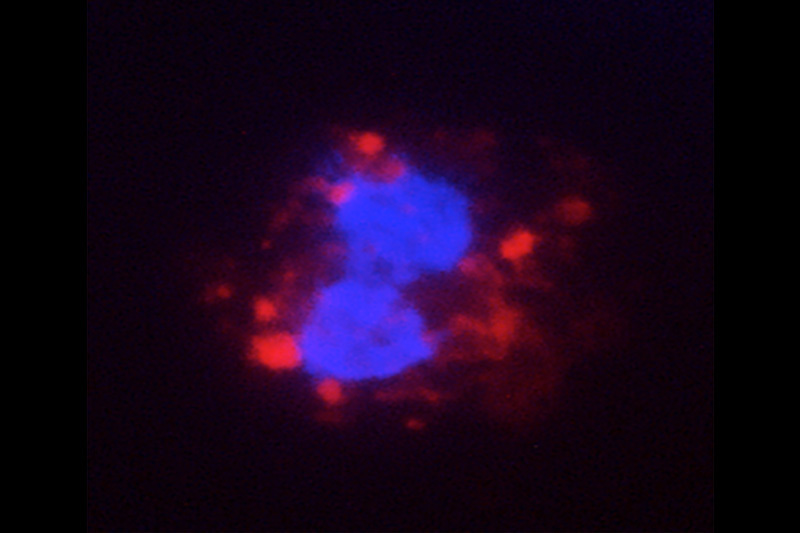Therapy developed at Boston Children’s stops preeclampsia before it starts

Preeclampsia occurs in about 3 to 5 percent of all pregnancies. Characterized by very high maternal blood pressure, it can lead to serious, sometimes fatal, complications in both mother and baby. In severe cases, early delivery is often the only effective treatment, usually before the baby’s lungs are fully developed.
Researchers within the Division of Newborn Medicine at Boston Children’s Hospital have discovered that a compound made naturally by the body may help stop preeclampsia before it even develops.

“While there are some therapies to help reduce maternal blood pressure in preeclampsia, we don’t have a treatment for prevention and no current therapies to prevent the long-lasting problems in the babies, like overall small birth weight and lung disease,” says Elizabeth Taglauer, MD, PhD, first-author of a preclinical study in mice that tested a new treatment to prevent preeclampsia onset.

“The exciting promise here is being able to intervene at the prenatal stage and prevent preeclampsia in the mother, as well as the complications of prematurity in the baby,” says senior author Stella Kourembanas, MD, the division’s chief. “This is important because most preterm babies will be exposed to high oxygen and many will require mechanical support to breathe, an intervention that places them at further risk for lung complications if the mother had also experienced preeclampsia.”
Stem cell byproduct
To address this challenge, Taglauer and colleagues in the Kourembanas research group studied mesenchymal stromal cells (MSCs), a type of stem cell that can develop into several other types of cells. MSCs are found in many tissues of the body, including the human umbilical cord. They release nanosized particles called extracellular vesicles, or MEx (mesenchymal stromal cell extracellular vesicles).
“MEx are microscopic particles, roughly the size of a virus, made of lipids, proteins, nucleic acids, and other naturally occurring cell components,” notes co-author S. Alex Mitsialis, PhD. “MSCs routinely secrete MEx, which may act by shuttling important signaling factors between cells, tempering harmful inflammation, and promoting general health in the tissues.”

In clinical trials outside of Boston Children’s, MSC treatments have been studied in more than 1,000 adults and children, targeting a variety of diseases without serious side effects. The team led by Kourembanas and Mitsialis discovered that the therapeutic benefits of MSC therapy are due to the MEx they release. They also showed MEx to be a promising novel therapy in newborn lung disease in animal studies.
“Encouraged by those results and other studies within our lab, we wanted to study MEx treatment in preeclampsia since we know it affects lung development,” says Kourembanas.
We hope that in the future, once this remedy has been tested in the clinic, we will be able to treat the moms who exhibit early signs of preeclampsia.”
– Stella Kourembanas
MEx therapy prevented preeclampsia
The team first purified MEx from MSCs isolated from human umbilical cords, then delivered them to pregnant mice early in pregnancy before preeclampsia developed, roughly equivalent to the early stage of a first trimester human pregnancy. After delivering MEx intravenously into the mother, the team saw evidence that they eventually migrated to cells in the uterus.
This study showed that MEx prevented maternal symptoms of preeclampsia and fetal growth restriction when given early. Most research and treatment studies have focused on improving maternal symptoms of preeclampsia. “We were excited that our study also showed improvement in the fetus, “says Taglauer. “Infant outcomes of preeclampsia (preterm birth, lung disease, growth restriction) are often much worse than maternal outcomes.”
While this study was done in mice, this discovery could have relevance for women who have recurrent preeclampsia, underlying immune disorders, or in surrogate pregnancies where the risk of preeclampsia is high.
“We hope that in the future, once this remedy has been tested in the clinic, we will be able to treat the moms who exhibit early signs of preeclampsia,” adds Kourembanas.
Next, Taglauer plans to study whether MEx treatment can stop preeclampsia if it is given later in pregnancy. “That will be important since preeclampsia usually develops later on in the pregnancy, usually around or after the 20th week,” she says. “Another goal will be to see if preventing preeclampsia by MEx therapy, the baby’s lungs will also function better.”
Learn more about the Division of Newborn Medicine at Boston Children’s.
Related Posts :
-

Mending injured hearts: Lessons from newborns?
When the heart is injured, as in a myocardial infarction, the damaged heart muscle cannot regenerate — instead, scar tissue forms. ...
-

Finding comfort and answers for twin-twin transfusion syndrome: Shannon’s story
Shannon’s journey through a challenging pregnancy with TTTS (twin-twin transfusion syndrome) was, as she puts it, an emotional rollercoaster. ...
-

Microvillus inclusion disease: From organoids to new treatments
Microvillus inclusion disease (MVID) is a rare type of congenital enteropathy in infants that causes devastating diarrhea and an inability ...
-

Rowan the Remarkable: Defying the odds with CPAM
This is the story of a baby named Rowan and his remarkable journey of beating the odds after doctors discovered ...





